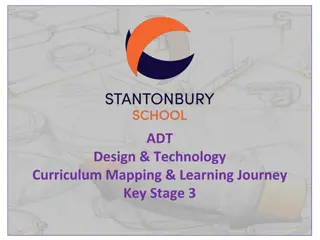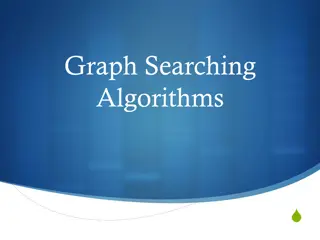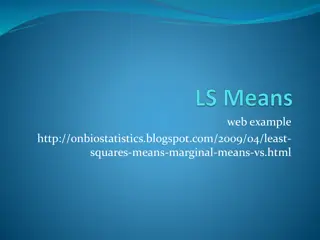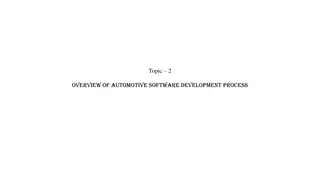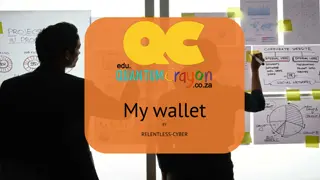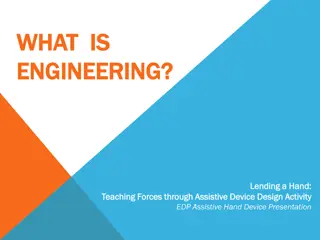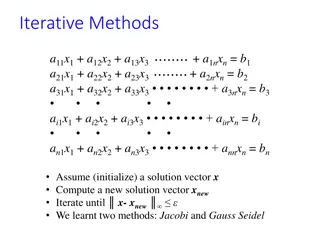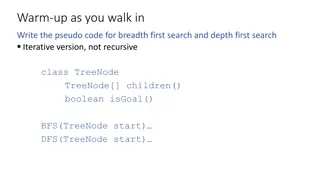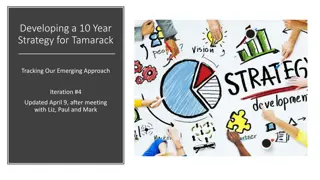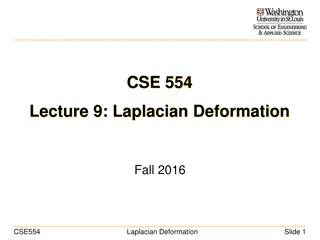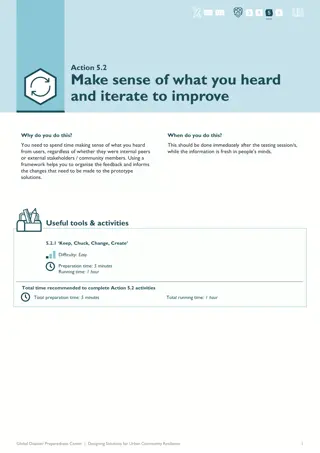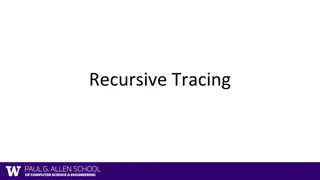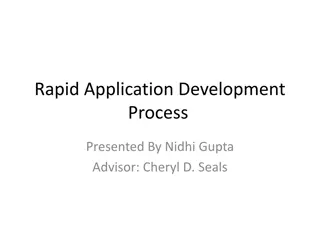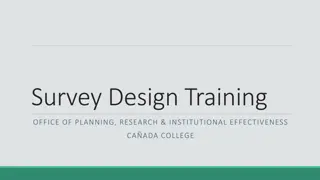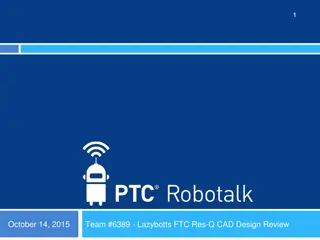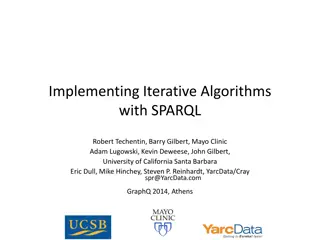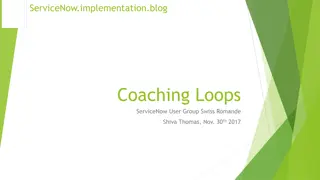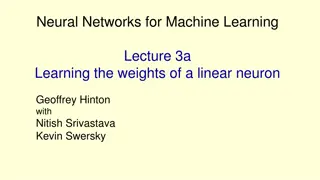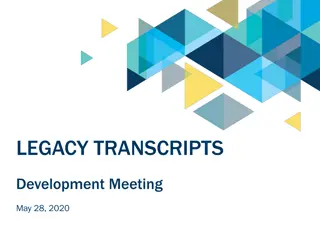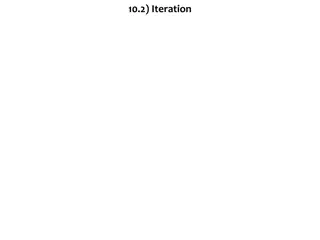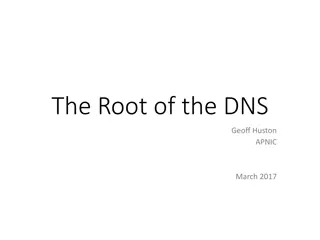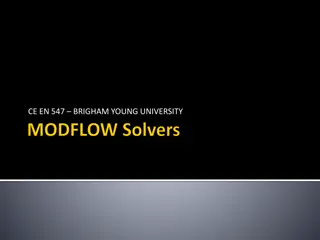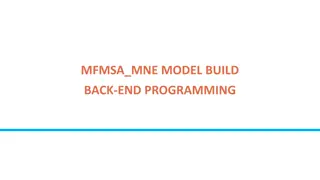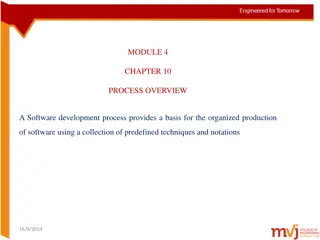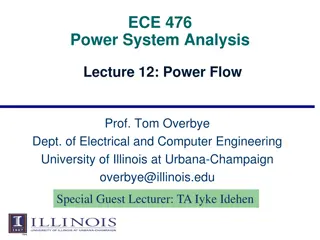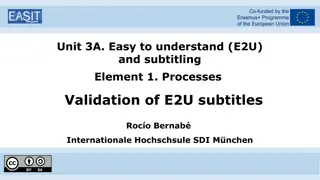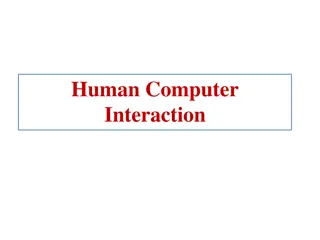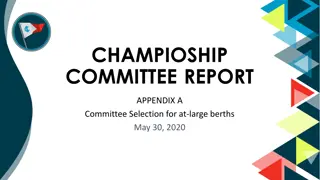Root Cause Analysis for Campaign Challenges
Root Cause Analysis (RCA) is a problem-solving method used to identify underlying causes of key process challenges in campaigns. It helps in learning from bottlenecks and successes to improve future outcomes. This analysis involves understanding what happened, why it happened, and what actions can b
7 views • 18 slides
Design & Technology Learning Journey at Key Stage 3
Explore the ADT Design & Technology Curriculum Mapping and Learning Journey at Key Stage 3, focusing on the iterative design process. Dive into the essential concepts, skills, and experiences that students will encounter in this engaging educational pathway.
0 views • 26 slides
Understanding Breadth-First Search (BFS) Algorithm for Graph Searching
This content delves into the Breadth-First Search (BFS) algorithm, a fundamental graph searching technique. It explains the step-by-step process of BFS, from initializing the graph to traversing vertices in a specific order. Through detailed visual representations, you will gain insights into how BF
1 views • 75 slides
Issues and Algorithms in Server Software Design
The content discusses fundamental issues in server software design such as connectionless vs. connection-oriented access, stateless vs. stateful applications, and iterative vs. concurrent server implementations. Various server algorithms like iterative and concurrent servers are explained with their
3 views • 44 slides
Understanding Means and LS Means Calculation in Statistics
Explanation of how means and least squares means (LS Means) are calculated in statistics. Describes the process of calculating means for different treatments and centers, as well as deriving LS Means through an iterative process, including handling empty cells.
1 views • 11 slides
Understanding Software Processes and Models
Software processes are structured activities essential for software system development, involving specification, design, validation, and evolution. Various process models and approaches like the Rational Unified Process and agile methods are discussed, highlighting the importance of adaptability in
2 views • 105 slides
Comprehensive Overview of Numerical Linear Algebra Methods for Solving Linear Systems
Explore numerical linear algebra techniques for solving linear systems of equations, including direct and iterative methods. Delve into topics like Gaussian elimination, LU factorization, band solvers, sparse solvers, iterative techniques, and more. Gain insights into basic iterative methods, error
6 views • 12 slides
Introduction to Neural Networks in IBM SPSS Modeler 14.2
This presentation provides an introduction to neural networks in IBM SPSS Modeler 14.2. It covers the concepts of directed data mining using neural networks, the structure of neural networks, terms associated with neural networks, and the process of inputs and outputs in neural network models. The d
0 views • 18 slides
Overview of Automotive Software Development Process
The development of software in the automotive industry is essential due to the increasing complexity of vehicles. This process involves requirements gathering, system design, component development, integration testing, validation, calibration, release, and maintenance. Automotive-specific considerat
0 views • 5 slides
Understanding the National Adaptation Plan (NAP) Process
Explore the conceptual understanding of the NAP process, highlighting its characteristics, importance for countries, and relation to other national processes. Learn about the objectives of NAP, its flexible and integrated nature, and the focus on reducing vulnerability and mainstreaming climate adap
0 views • 13 slides
Designing the Perfect Wallet for Mom
Explore the design process of creating an ideal wallet for a partner, focusing on portability and security. Empathize with their needs, define the problem, ideate creative solutions, and gather feedback for iterative improvements. The goal is to address the partner's preferences for a small, durable
0 views • 8 slides
Solving Maximum Contiguous Subarray Sum Problem with Dynamic Programming
Explore the concept of finding the maximum contiguous subarray sum using dynamic programming as an improvement over divide and conquer algorithms. Learn the steps of defining the objective, writing recurrences, designing memoization structures, and implementing iterative algorithms. Delve into the d
1 views • 32 slides
Understanding Engineering: Concepts and Processes
Engineering is the application of science, math, and technology to design solutions for everyday problems, benefiting society. The Engineering Design Process (EDP) involves defining problems, researching, brainstorming solutions, building prototypes, testing, communicating designs, and redesigning a
0 views • 28 slides
Understanding Iterative Methods in Linear Algebra
Explore the concepts of iterative methods such as Jacobi and Gauss-Seidel for solving systems of linear equations iteratively. Understand conditions for convergence, rate of convergence, and ways to improve convergence speed. Delve into iterative schemes in matrix forms, convergence criteria, eigenv
0 views • 39 slides
AI Search Algorithms: BFS and DFS Pseudo-code Iterative Version
Explore the iterative versions of Breadth First Search (BFS) and Depth First Search (DFS) with pseudo-code examples implemented for class TreeNode. Understand the concept of TreeNode, children() function, isGoal() method, and apply BFS and DFS starting from TreeNode start.
0 views • 53 slides
MFMSA_BIH Model Build Process Overview
This detailed process outlines the steps involved in preparing, building, and debugging a back-end programming model known as MFMSA_BIH. It covers activities such as data preparation, model building, equation estimation, assumption making, model compilation, and front-end adjustment. The iterative p
0 views • 10 slides
Developing a 10-Year Strategy for Tamarack: Updated Approach and COVID Considerations
Developing a comprehensive 10-year strategy for Tamarack involves defining its vision, mission, strategies, governance, and business model. Key aspects such as strategic thinking, planning, and the impact of COVID-19 are considered in this iterative process with a focus on generating future scenario
1 views • 8 slides
Balanced Graph Edge Partition and Its Practical Applications
Balanced graph edge partitioning is a crucial problem in graph computation, machine learning, and graph databases. It involves partitioning a graph's vertices or edges into balanced components while minimizing cut costs. This process is essential for various real-world applications such as iterative
0 views • 17 slides
Laplacian Deformation in Engineering and Applied Science
Laplacian deformation is a technique used in non-rigid registration to account for shape variance and improve fitting between source and target shapes. This method involves minimizing the distance and distortion terms to achieve accurate alignment. Intrinsic and extrinsic methods are discussed, wher
0 views • 53 slides
Iterative Feedback Framework for Prototype Improvement
The iterative feedback framework involves making sense of user feedback using the Keep, Chuck, Change, Create (KCCC) model to iterate and enhance prototype solutions. This process helps organize input from testing sessions, informing necessary modifications for better outcomes. The framework emphasi
1 views • 26 slides
Understanding Recursive and Iterative Factorials through Tracing
This content provides an in-depth exploration of recursive and iterative factorial functions through tracing examples. The explanations are accompanied by visual aids to help conceptualize the iterative and recursive processes of calculating factorials. By comparing the two methods side by side, rea
0 views • 7 slides
Understanding Rapid Application Development (RAD) Process
Rapid Application Development (RAD) is a software development process that focuses on minimizing pre-planning and accelerating the software development lifecycle. By involving users early on, utilizing prototyping, and emphasizing user requirements, RAD aims to deliver high-quality systems quickly.
0 views • 63 slides
Ex-ante Evaluation of Bulgaria-The Former Yugoslav Republic of Macedonia IPA CBC Programme 2014-2020
This document outlines the ex-ante evaluation process for the Bulgaria-The Former Yugoslav Republic of Macedonia IPA CBC Programme 2014-2020. It covers key phases, strategic environmental assessment, stakeholder involvement, lessons learned from past programming, program design, findings regarding t
0 views • 15 slides
Survey Design Training for Effective Data Collection
Learn how to conduct surveys effectively by understanding the purpose, developing survey objectives, research questions, and survey questions. Explore survey implementation options, data analysis techniques, and available resources to enhance your data collection process. The iterative nature of the
0 views • 15 slides
Robotics Competition Journey: Team #6389 Lazybotts FTC Res-Q CAD Design Review
Follow Team #6389 Lazybotts from concept to competition as they share lessons learned, design strategies, and their iterative CAD design process in preparation for the RES-Q challenge. Discover insights on robot speed, scoring tactics, and autonomous capabilities, all aimed at achieving success in r
0 views • 32 slides
Developing a Graphical User Interface for High-Resolution X-ray Spectra Analysis
High-resolution X-ray spectra analysis can be challenging due to the complex nature of the information contained within. This project aims to simplify the process by developing a user-friendly graphical interface that enables users to visualize, analyze, and interpret X-ray spectra data effectively.
0 views • 19 slides
Implementing Iterative Algorithms with SPARQL
This comprehensive guide explores the implementation of iterative algorithms with SPARQL, focusing on YarcData/Cray's approach to using these algorithms. It covers YarcData's interest in graphs, the Urika appliance, iterative algorithms in machine learning, implementation approach, and algorithms im
1 views • 12 slides
Understanding Coaching Loops for Improved Performance
Coaching loops are a method of enhancing performance by providing iterative feedback to guide individuals towards high performance. Unlike traditional feedback methods, coaching loops allow for real-time influence on the process outcome, improving overall effectiveness. By implementing the Kepner-Tr
0 views • 24 slides
Understanding Neural Networks for Machine Learning
Explore the learning process of linear neurons, why the perceptron learning procedure cannot be generalized to hidden layers, and the importance of iterative methods in solving complex problems in the context of neural networks. The content delves into the minimization of errors, the use of real-val
0 views • 34 slides
Legacy Transcripts Development Meeting Summary
Legacy Transcripts project aims to show progress in developing a web-based application to pull data from legacy systems into a single database for colleges transitioning to ctcLink. The iterative development process involves reviewing, testing, and deploying the application in smaller cycles until i
0 views • 10 slides
Transforming Service: A Journey to Success
Embark on a transformative journey with uktradeinfo.com towards success by planning, forming teams, fostering collaboration, working flexibly, choosing the right technology, staying iterative, and always staying ahead of the curve. Learn to bounce back when things go wrong and never stand still in t
0 views • 4 slides
Iterative Root Approximation Using Natural Logarithm
The content covers iterative root approximation using natural logarithm in solving equations. It explores finding roots by iterative formulas and demonstrates calculations to reach approximate values. The process involves selecting intervals to show correct values and ensuring continuity for accurat
0 views • 14 slides
Understanding the Domain Name System (DNS) Structure
The Domain Name System (DNS) is a distributed data collection utilizing a delegation hierarchy to reflect the hierarchical structure of domain names. This system resolves DNS names by discovering information through iterative searches, starting from the root zone. The process involves querying serve
0 views • 25 slides
Understanding Iterative Solvers in MODFLOW
In this content, you will learn about the working of iterative solvers, solver parameters, troubleshooting convergence issues, and various solver algorithms in MODFLOW. The iterative tweaking of starting head values, different solver codes like SIP, PCG2, GMG, and their characteristics are explained
0 views • 21 slides
Detailed Process of Building MFMSA_MNE Model in Back-end Programming
The process involves preparing data, building and debugging a model, writing and estimating equations, making assumptions, compiling and solving the model, adjusting the front-end, ensuring data consistency, and observing properties through an iterative process. It includes specific steps such as co
0 views • 10 slides
Software Development Process Overview
A software development process provides a structured approach for creating software using predefined techniques and stages such as system conception, analysis, system design, class design, implementation, testing, training, deployment, and maintenance. It involves stages like domain analysis, applic
0 views • 39 slides
Power System Analysis: Lecture on Power Flow
Lecture 12 on Power Flow Analysis in Power Systems covers the use of power balance equations when analyzing complex power consumption and generation. It explains the derivation of real power balance equations for iterative solutions in power flow analysis. The lecture highlights the need for iterati
0 views • 30 slides
Validation of Easy-to-Understand Subtitles: A Detailed Process Overview
Understanding the validation process for Easy-to-Understand (E2U) subtitles is crucial for ensuring accuracy and accessibility. This content delves into the roles, tasks, and characteristics involved in validating E2U subtitles, along with insights on handling large amounts of content and interlingu
0 views • 15 slides
Understanding Prototyping in Human-Computer Interaction
Design activities in Human-Computer Interaction involve iterative processes of prototyping and evaluation to create user-centric interactive products. Prototyping allows stakeholders to interact with and explore the design's suitability, serving various purposes like testing feasibility, clarifying
0 views • 7 slides
Committee Selection Process Overview for National At-Large Berths
The committee report outlines the Selection Process for at-large teams for the national championship. It involves an iterative process, starting with unanimous consent for at-large teams. The members fill out an initial ballot to select teams for the national field based on past performance and pote
0 views • 20 slides

